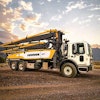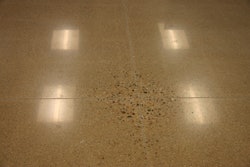On the afternoon of Friday, July 14, firefighters responded to a 2-alarm fire at a multi-family, wood-framed house in Charleston, South Carolina, that displaced four families. Two firefighters were treated for heat-related injuries.
“[Friday’s] structure was a wood structure, and you know how fast they go up,” said Charleston Council member Michael Seekings in an interview with The Post and Courier, who lives next door.
The fire comes at a time of significant construction and expansion for the port city. As the community considers their options when it comes to building the Charleston of tomorrow, Build with Strength, a coalition of the National Ready Mixed Concrete Association comprised of fire service professionals, engineers, architects and industry experts, is urging developers and members of the local building code community to construct using only the most resilient materials.
“The nature of combustible, wood-frame construction makes it a worrisome choice for multi-family buildings, in which a fire can spread rapidly from apartment to apartment,” says Kevin Lawlor, a spokesperson for Build with Strength. “Charleston now has an opportunity to build and re-build using construction materials like concrete that will last a lifetime or longer.”
In May 2017, representatives from EYC Companies, Amvic Building System, and Build With Strength, gathered for a multi-family executive roundtable and site tour event of 17 South, a 220-unit apartment complex under construction in Charleston, South Carolina that utilizes the latest innovations in concrete construction.
Built with Insulated Concrete Forms (ICFs) and concrete, 17 South makes use of cutting-edge technology, demonstrating the value in utilizing what is quickly becoming the building material of choice for multi-family residential, academic and commercial buildings due to its strength, energy-efficiency, lower lifecycle costs and ease of use.
ICF “is a type of permanent concrete formwork that creates the external wall envelope of a building.” Typically, it is standard reinforced concrete sandwiched between two faces of low absorptive, foam plastic insulating material. Its unique, lightweight structure allows crews to construct buildings more quickly and easily than conventional methods, without compromising the integrity of the structure.
“In a city located right along the water’s edge, it’s imperative that durable materials that can withstand the full force of what Mother Nature has to offer be used – whether it is fires, hurricanes or flooding,” continued Lawlor. “Insulated Concrete Forms would be able to provide the peace of mind for residents.”


















